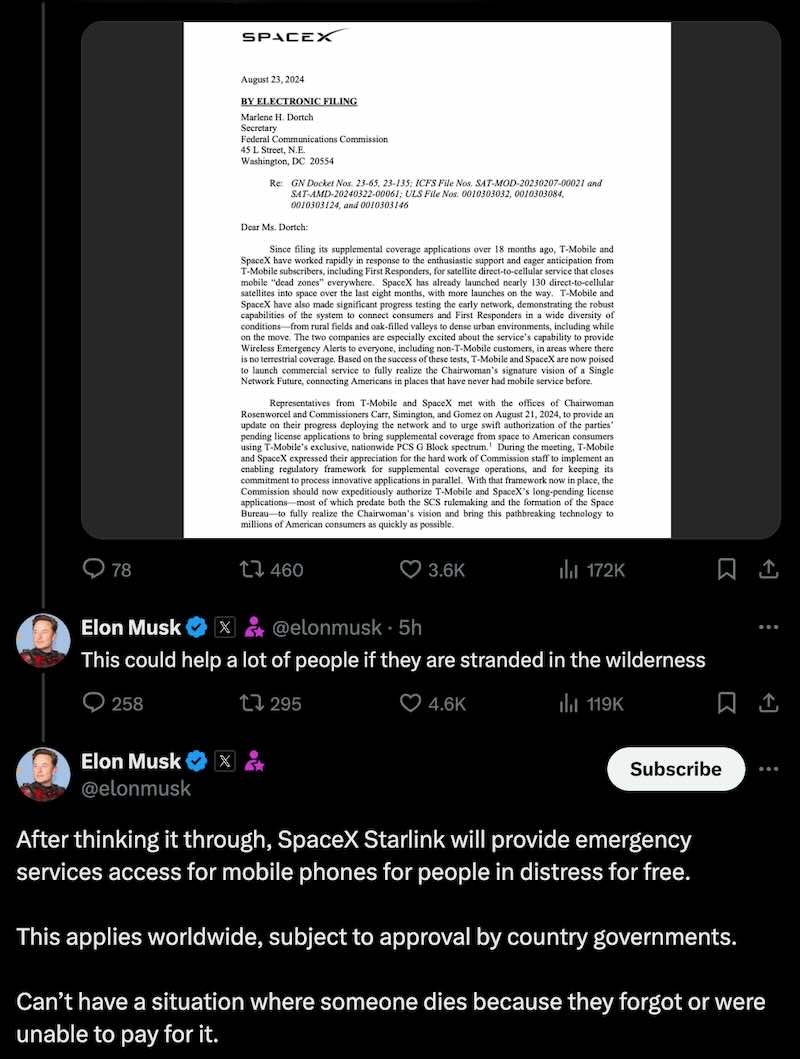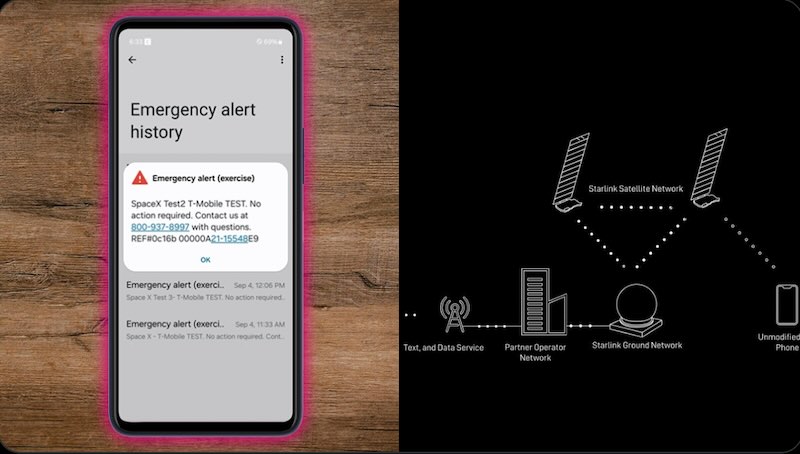T-Mobile has successfully completed the first wireless emergency alert via SpaceX’s direct-to-cell Starlink satellites. This milestone achievement promises to revolutionize emergency communications, particularly in areas with limited cellular coverage.
T-Mobile’s latest test demonstrates the potential to extend emergency alert coverage to approximately 500k square miles of sparsely populated, mountainous, or uninhabitable terrain across the United States. This advancement could prove crucial during natural disasters such as forest fires, tornadoes, and hurricanes, as well as for Amber alerts.
The implications of this technology are far-reaching. Emergency alerts transmitted through Starlink satellites won’t be limited to T-Mobile customers; users of Verizon, AT&T, and other wireless providers will also receive these critical notifications, (SpaceX Starlink Provide Emergency Alerts to All Wireless Users in Cellular Dead Zones). This universal approach ensures that potentially life-saving information reaches as many people as possible during crisis situations.

On September 5th, T-Mobile initiated a test alert simulating an evacuation notice. The alert traveled an impressive 217 miles into space, where it was picked up by one of the more than 175 Starlink direct-to-smartphone satellites currently orbiting Earth. These satellites effectively function as cell towers in space, bridging the gap between traditional terrestrial networks and remote locations.
After receiving the alert, the satellite broadcast it to a designated geographic area affected by the hypothetical evacuation notice. A T-Mobile smartphone on the ground successfully received the message, completing the test.
One of the most promising aspects of this new system is its speed. Emergency operators were able to queue up and deliver the alert message via Starlink satellites to users on the ground in a matter of seconds. This rapid response time could be critical in situations where every moment counts.
While the successful test marks a significant step forward, there are still questions to be addressed. Traditional Wireless Emergency Alerts are designed to be area-limited, typically at the cell tower level. With satellite transmission, the downlink footprint could span dozens of miles, potentially raising concerns about the precision of targeted alerts.
Additionally, the broader implications of this technology extend beyond emergency services. For instance, there’s speculation about how this direct-to-cell capability might impact other services, such as Tesla’s Premium Connectivity, potentially enabling access from virtually anywhere.
As T-Mobile and SpaceX continue to refine this technology, they’re not just pushing the boundaries of what’s possible in emergency communications – they’re reaching for the stars to keep us all safer on the ground.
Related Post
SpaceX Starlink Constellation Nabs FCC Approval for Next-Gen Satellites Upgrades
